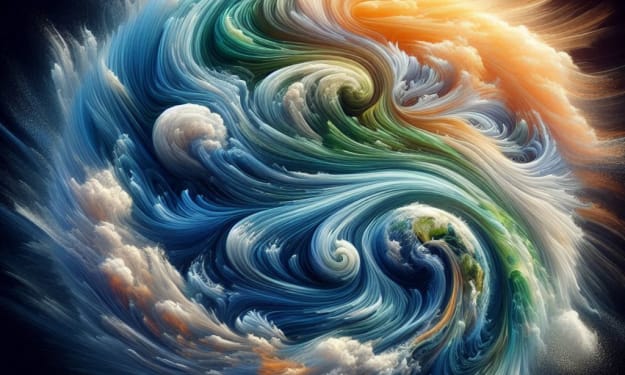Decoding the Mystery: Is Time Real or Just an Illusion?
Exploring Its Essence and Illusory Nature

Embarking on a cosmic odyssey to unravel the enigma of time, humanity's quest for temporal understanding has journeyed from ancient observations of natural cycles to the intricate equations of modern physics. The early timekeepers, reliant on the Earth's rhythmic dance through day and night and the changing seasons, wove together rudimentary calendars. Advancements brought forth sundials and mechanical clocks, introducing precision to the measurement of time, confining it within convenient boxes.
Yet, as our grasp on time tightened, a profound question emerged: What is time? Is it a palpable entity woven into the fabric of the universe, or a mere construct of human cognition? The orchestrator of this temporal symphony, Albert Einstein, introduced a revolutionary composition—his theory of relativity. In this cosmic masterpiece, Einstein proposed a universe where time, far from being a steadfast metronome, exhibited a fluid variability. Individuals in distinct scenarios experienced the passage of time at varying rates, especially those hurtling close to the speed of light or entwined in the gravitational dance around supermassive black holes.
Einstein's revelation led to the conception of space-time, a dynamic entity merging time with space. A pliable substance that could bend and curve, space-time became the canvas upon which the cosmic ballet unfolded. While Einstein's theory underscored time as an intrinsic part of the universe, it also unfurled a paradoxical question: Why, in the vast expanse of the cosmos, is our movement through space multidirectional, while our journey through time remains unidimensional? The arrow of time, an indomitable force, ensures that the past is perpetually behind us, resisting our attempts to revisit or alter it.
Imagine, for a moment, observing the reversal of events—an intricate drop of food coloring retracting into itself within a glass of water. This counterintuitive spectacle, a violation of the customary diffusion of particles, embodies the concept of time unfolding backward. It is a concept encapsulated by the Second Law of Thermodynamics, which dictates that systems tend to transition from order to disorder, or entropy, over time—a fundamental characteristic that defines the arrow of time.
In the pursuit of a grand unifying theory—the elusive "theory of everything"—physicists confront the interplay between general relativity, governing the immense scales of the universe, and quantum physics, unraveling the mysteries of the infinitesimally small. The Wheeler-DeWitt equation, a contender in this theoretical quest, intriguingly omits time from its equations. If such speculative equations were validated, would it imply that time, at its core, is an illusion, a mere artifact of human perception?
Delving deeper, the notion of time as an emergent property emerges. Emergence, a phenomenon where certain properties arise at the collective level while absent in individual components, offers a tantalizing perspective. Drawing parallels to the tide in a single water molecule versus the entire ocean, or the illusion of motion in a movie created by a sequence of static frames, time may be an emergent property, arising from the intricate interplay of fundamental elements.
As physicists navigate these uncharted territories, they confront profound questions about the essence of time. Does it exist at a fundamental level, or is it an emergent property—a mirage crafted by the intricate dance of cosmic elements? The cosmic symphony, with time as its elusive melody, continues to unfold. In this ongoing composition, rife with tantalizing questions, physicists grapple with the enigma of time, challenging the boundaries of our understanding.
As we traverse this cosmic chronicle, the mysteries of time persist, inviting us to explore its intricacies and redefine our perceptions of existence. The quest for temporal understanding remains an ever-evolving journey, beckoning us to delve deeper into the symphony of the cosmos and unlock the secrets of the temporal tapestry. Whether time exists as a fundamental entity or an emergent property, the cosmic odyssey to decipher its mysteries endures, offering glimpses into the profound nature of our universe.
About the Creator
Tallal Jafri
Dive into a universe crafted by Tallal, Uncover captivating narratives that transcend boundaries, beckoning you to a symphony of emotions and adventures. Explore the extraordinary.
Enjoyed the story? Support the Creator.
Subscribe for free to receive all their stories in your feed. You could also pledge your support or give them a one-off tip, letting them know you appreciate their work.






Comments
There are no comments for this story
Be the first to respond and start the conversation.